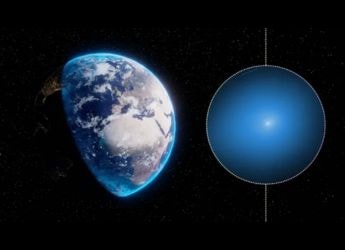- Home
- Science
- Science News
- Trillions of Comets Found in 74 Alien Star Systems, Unveiling Exocomets and Planetary Belts
Trillions of Comets Found in 74 Alien Star Systems, Unveiling Exocomets and Planetary Belts
Trillions of icy exocomets have been found orbiting alien stars, reshaping our understanding of planetary systems.

Photo Credit: ALMA (ESO/NAOJ/NRAO)/SMA/ L. Matrà et al.
The discovery was made using ALMA in Chile and SMA in Hawaii.
A vast number of icy exocomets have been identified orbiting 74 star systems, unveiling a complex picture of planetesimal belts situated far from their parent stars. These belts, comprised of millimeter-sized particles generated by cometary collisions, highlight the intricate processes shaping planetary systems. Observations suggest that these cold, distant regions could play a crucial role in delivering water or impacting planetary environments, potentially influencing the habitability of nearby planets.
Discovery Backed by Astronomical Observations
According to findings published in Astronomy and Astrophysics, the discovery was facilitated by the Atacama Large Millimeter Array (ALMA) in Chile and the Submillimeter Array (SMA) in Hawaii. These instruments detected submillimeter radiation emitted by particles within the belts, where temperatures range between –250°C to –150°C. Dr. Luca Matrà from the University of Dublin, who led the study as part of the REASONS program, noted in a statement that exocometary belts are commonly found around at least 20 percent of planetary systems, serving as reservoirs of rocky and icy bodies.
Patterns and Variations Observed Across Systems
As reported by space.com, as per the research, the planetesimal belts range in age from newly formed to billions of years old and are located between tens and hundreds of astronomical units (AU) from their central stars. The study revealed that the depletion of pebble-sized particles occurs more rapidly in belts located closer to their stars. Sebastián Marino from the University of Exeter highlighted to space.com, the diverse structures of these belts, with some resembling narrow rings and others resembling wide disks.
Implications for Planetary Systems and Water Delivery
The study proposes that unobservable objects, potentially as large as 140 kilometres in diameter, exist within the belts. Scientists are investigating whether these belts contribute to the delivery of water to planets, potentially aiding or hindering life. Instruments like the James Webb Space Telescope (JWST) could further explore these belts, providing insights into gaps or hidden planetary bodies. This ongoing research could deepen our understanding of planetary system evolution and the distribution of water in the cosmos.
Get your daily dose of tech news, reviews, and insights, in under 80 characters on Gadgets 360 Turbo. Connect with fellow tech lovers on our Forum. Follow us on X, Facebook, WhatsApp, Threads and Google News for instant updates. Catch all the action on our YouTube channel.
- Samsung Galaxy Unpacked 2025
- ChatGPT
- Redmi Note 14 Pro+
- iPhone 16
- Apple Vision Pro
- Oneplus 12
- OnePlus Nord CE 3 Lite 5G
- iPhone 13
- Xiaomi 14 Pro
- Oppo Find N3
- Tecno Spark Go (2023)
- Realme V30
- Best Phones Under 25000
- Samsung Galaxy S24 Series
- Cryptocurrency
- iQoo 12
- Samsung Galaxy S24 Ultra
- Giottus
- Samsung Galaxy Z Flip 5
- Apple 'Scary Fast'
- Housefull 5
- GoPro Hero 12 Black Review
- Invincible Season 2
- JioGlass
- HD Ready TV
- Laptop Under 50000
- Smartwatch Under 10000
- Latest Mobile Phones
- Compare Phones
- OnePlus 15R
- Realme Narzo 90x 5G
- Realme Narzo 90 5G
- Vivo S50 Pro Mini
- Vivo S50
- OPPO Reno 15c
- Redmi Note 15 5G
- Redmi Note 15 Pro 5G
- Asus ProArt P16
- MacBook Pro 14-inch (M5, 2025)
- OnePlus Pad Go 2
- Poco Pad M1
- Just Corseca Skywatch Pro
- Honor Watch X5
- Acerpure Nitro Z Series 100-inch QLED TV
- Samsung 43 Inch LED Ultra HD (4K) Smart TV (UA43UE81AFULXL)
- Asus ROG Ally
- Nintendo Switch Lite
- Haier 1.6 Ton 5 Star Inverter Split AC (HSU19G-MZAID5BN-INV)
- Haier 1.6 Ton 5 Star Inverter Split AC (HSU19G-MZAIM5BN-INV)












